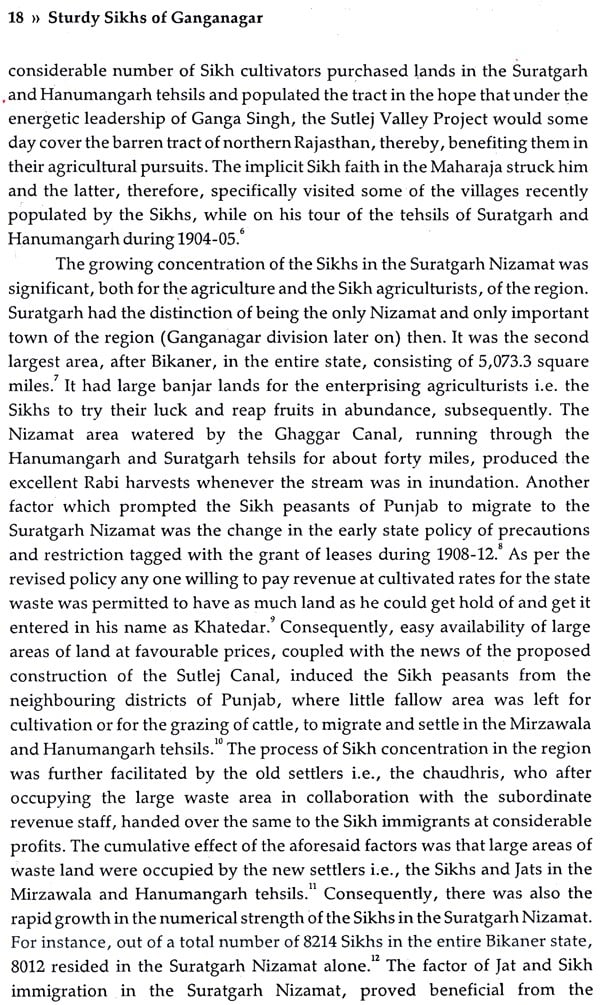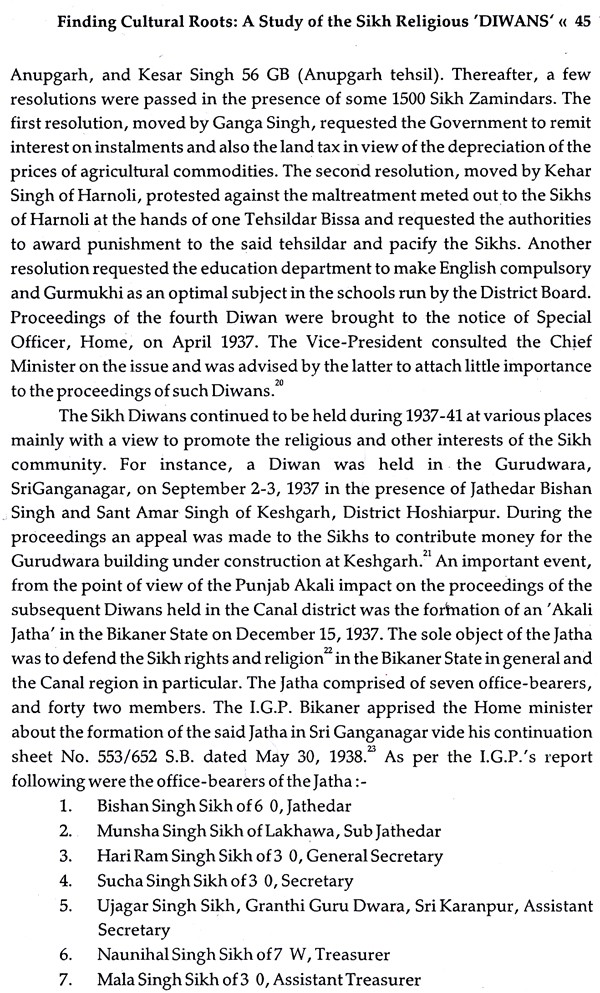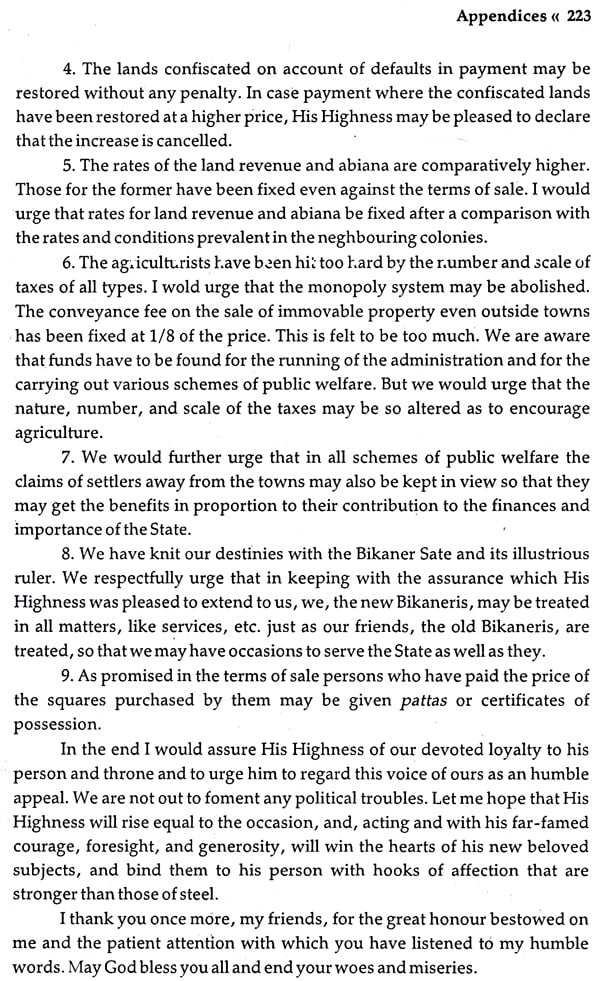
Sturdy Sikhs Of Ganganagar (Dimensions Of Their Growth)
Book Specification
| Item Code: | NCZ109 |
| Author: | S.C. Misra |
| Publisher: | Books Treasure |
| Language: | English |
| ISBN: | 9788192516455 |
| Pages: | 248 |
| Cover: | HARDCOVER |
| Other Details | 9.00 X 6.00 inches |
| Weight | 450 gm |
Book Description
Sri Ganganagar, the northern most city of Rajasthan, is situated on one hand near borders of Rajasthan, Haryana and Punjab and on the other the international border of India and Pakistan. Sri Ganganagar district is located between latitude 28.4 to 30.6 and longitude 72.2 to 75.3.
Sri Ganganagar, the food basket of Rajasthan is also called the Punjab of Rajasthan because of its significant Punjabi population. The Sikh immigration into the Ganganagar division of northern Rajasthan began. during the later half of the 19th Century. The Sikh peasants from the neighbouring districts of Punjab, where little fallow area was left for cultivation, were in fact induced to migrate and settle in the Suratgarh nizamat owing to two factors the easy availability of large areas of land at favourable prices, and the news of the proposed construction of the Sutlej Canal. The Sikh agriculturists of the Suratgarh nizamat, mostly Jats from the Ferozepur district of Punjab, and also from Bahawalpur, Faridkote and other states, emerged as one of the most leading agriculturists of the Bikaner State. These Sikhs, who held nearly 75,000 acres in occupancy right, changed the financial face of the peasants of the Hanumangarh and Mirzawala tehsils considerably.
The Sikhs had registered phenomenal increase in their numbers, in the Ganganagar division, from 1885 onwards. As per the census report of the State, 1931, the Sikhs had increased during the last forty years by 6,324 per cent. As the Punjabi Sikh immigrants were mostly agriculturists, the Ganganagar and Suratgarh nizamats had a definite rural bias in their growth. Almost the same census trends were noticeable during 1931-41. During this. decade, the large influx in the three nizamats of the Ganganagar division was also from Punjab, and consisted mostly of Sikhs. The number of Sikh immigrants returned was the largest in the Ganganagar nizamat.
**Contents and Sample Pages**














